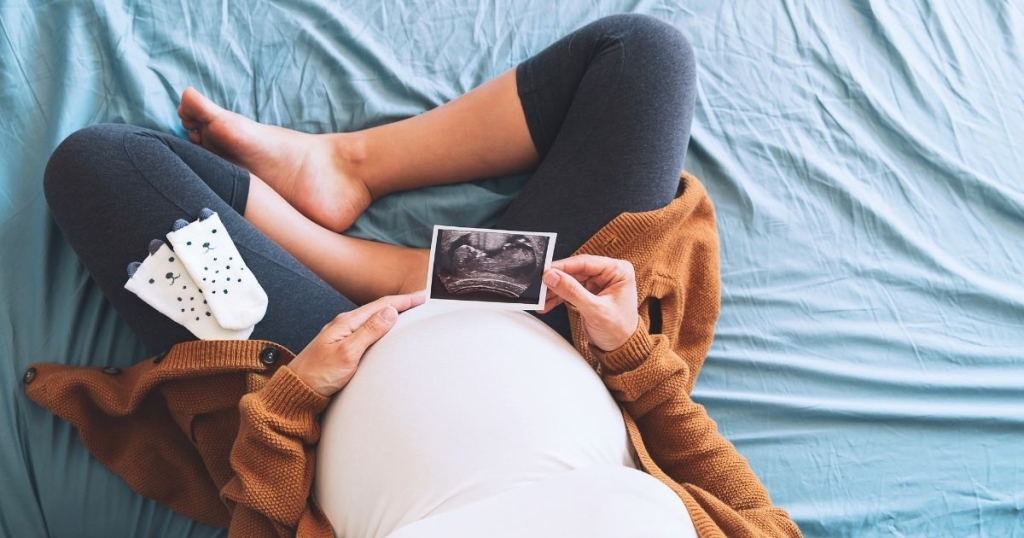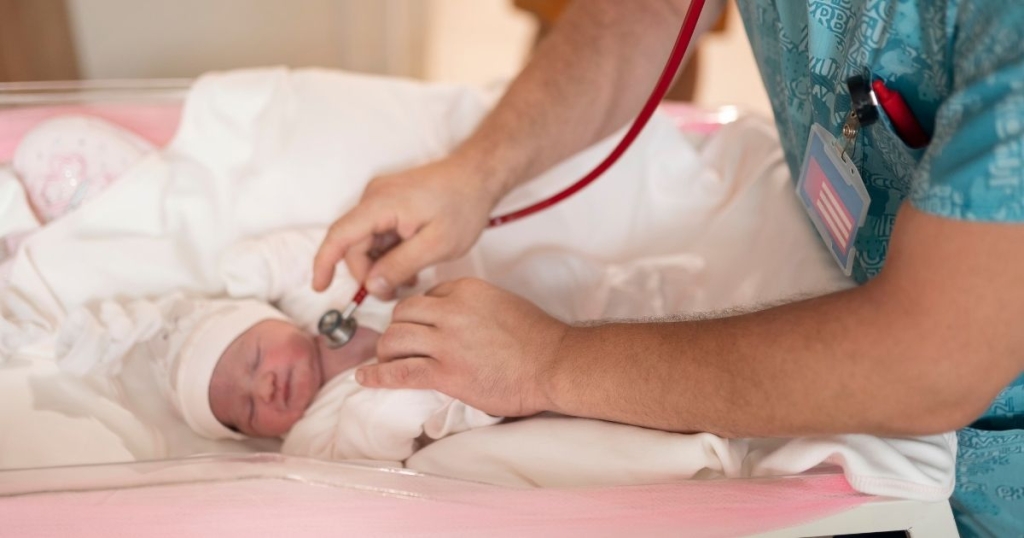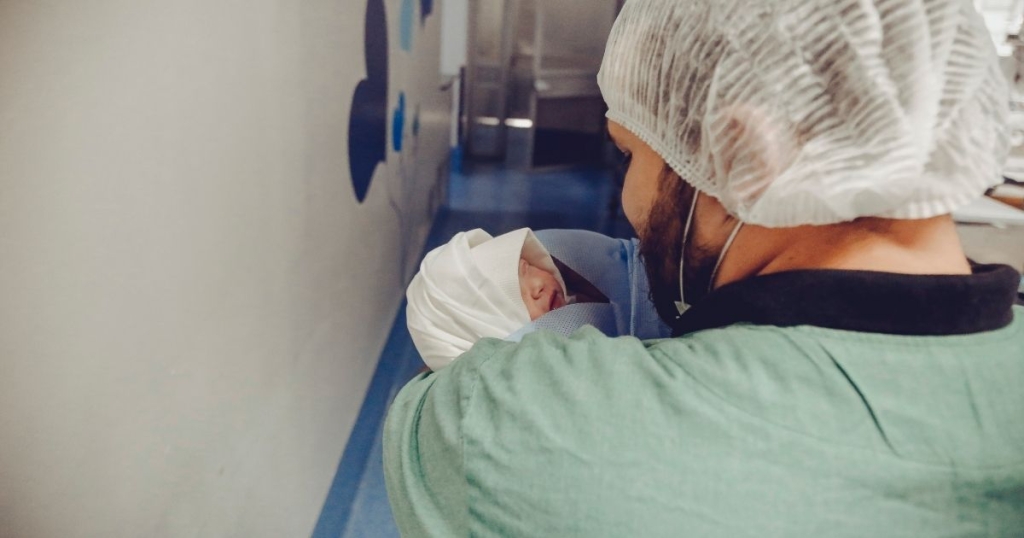
Authors: Cara Piccoli, MD; Sonika Agarwal, MBBS, MD, Children’s Hospital of Philadelphia
Reviewed: August 2021
SUMMARY
Neuronal migration disorders (NMDs) are a group of rare conditions caused by abnormal brain development during pregnancy. NMDs are due to an interruption in the processes of brain formation or development in the womb.
Symptoms can vary. They will depend upon the type and severity of the brain defect. Symptoms can include:
- Seizures
- Developmental delays
- Intellectual and cognitive issues
- Difficulty with speech and movement
- Vision loss
- Hearing loss
- Hydrocephalus (high pressure in the brain)
There is no cure for NMDs. However, many medications, therapies, and surgeries are available to help.
JUMP TO
Disorder Overview
DESCRIPTION
A baby’s brain forms during pregnancy. First, nerve cells (neurons) form in the center of the brain. Then, they move outward to their final destinations all over the brain and are organized as the brain develops. This migration is a very precise process. It requires certain chemical signals to be sent accurately. In a fully developed brain, there are:
- Two hemispheres (halves of the brain)
- Appropriately sized gyri (folds in the brain)
- Sulci (grooves in the surface of the brain)


In neuronal migration disorders, neurons do not reach their appropriate destinations. This results in an abnormal brain structure. Sometimes, the abnormality is minimal. Other times, it is more severe. Examples of NMDs include:
- Agenesis of corpus callosum. This is when the major connection between the two halves of the brain do not properly form.
- Agenesis of cranial nerves. This is when the nerves controlling face and eye movements, hearing, balance, and swallowing do not properly form.
- Focal cortical dysplasia. This is when a limited area of the brain forms abnormally.
- Lissencephaly and pachygyria. In both of these NMDs, the brain is abnormally smooth.
- Macrogyria. This is when there are larger-than-normal folds of the brain.
- Microgyria. This is when there are smaller-than-normal folds of the brain.
- Polymicrogyria. This is when there are an abnormal number of small brain folds.
- Neuronal heterotopias. In this condition, gray matter in the brain appears in the wrong places. It might appear around the ventricles, the spaces of fluid inside the brain. Or it might appear in areas of white matter.
- Porencephaly. This results in an abnormal, fluid-filled cyst in the brain.
- Schizencephaly. This results in a slit or cleft in the brain.
SIGNS AND SYMPTOMS
Diagnosis
NMDs can sometimes be diagnosed on prenatal ultrasound.
Fetal magnetic resonance imaging (MRI) done in pregnancy can confirm a diagnosis. It can also provide more details on the severity and presence of other brain malformations before the baby is born.
If a diagnosis is not made during pregnancy, NMDs can be diagnosed in infancy and childhood using:
- A head ultrasound (in infants only)
- A head computed tomography scan (CT scan)
- Brain MRI


Symptoms
Common symptoms of NMDs include:
- Microcephaly. This is when the head is abnormally small.
- This is when the head is abnormally large.
- Epilepsy. Children may develop seizures. The seizures may require medications, procedures, or a specialized medical diet.
- Developmental delays. There may be delays in reaching milestones such as:
- Rolling over
- Sitting
- Standing
- Walking
- Talking
- Learning
- Using hands
- Learning disabilities. Children will need extra help at school. They may need to be enrolled in special education.
- Problems with motor control and movement. This can include:
- Difficulty controlling muscles
- Lack of movement
- Muscles that are too tight or too floppy
- Unpredictable movements
- Problems with communication. This can include trouble:
- Learning or saying words
- Understanding language
- Communicating with words, sign language, or pointing
- Problems with swallowing. Some children may not be able to swallow safely. Many will benefit from a feeding tube. The feeding tube can help them safely get nutrition and medications.
- Problems with vision and hearing. Some children may be blind and/or deaf. They may benefit from:
- Vision or hearing therapy
- Hearing aids
- Special accommodations at school
- Facial differences. Some children may not look like their parents due to abnormal face development.
- This occurs when there is too much fluid in the head. The fluid can cause high pressure in the head.
Complications
NMDs can put children at risk for potentially life-threatening complications. These complications can include:
- Lung infections
- Difficulty breathing
- Seizures that are difficult to treat


CAUSES
Frequently, the cause of an NMD is unknown. However, some cases are caused by genetic mutations. A genetic mutation is a change in a person’s DNA. Genetic mutations can be inherited from parents, or they can occur randomly. New, random changes in DNA are called de novo mutations.
Other possible causes of NMDs include:
- Infection during pregnancy
- Physical trauma during pregnancy
- Toxin exposure during pregnancy
DIAGNOSIS AND LABORATORY INVESTIGATIONS
Several types of lab tests and imaging can help with understanding NMDs.
Brain Imaging
Brain imaging can help diagnose NMDs.
- CT scans. CT scans can be helpful in diagnosing NMDs in infants and children.
- Ultrasounds can be used for infants, but not older children.
- MRI provides the best quality image. It is therefore the best diagnostic tool. MRI can be used in infants, children, or prior to birth. Fetal MRI can provide a diagnosis prior to birth.
Genetic Testing
Genetic testing may be helpful in determining if there is a genetic cause for an NMD. Genetic studies may be helpful for family planning. They can also help doctors determine the risk of complications.
There are several genetic tests available. Often, more than one test is recommended. Some patients may need multiple tests to diagnose or rule out a genetic cause. Blood and saliva are the most common samples used for genetic testing. The tests often take several weeks or months to produce results.
Examples of recommended genetic tests include:
- A chromosomal microarray. This tests whether there are missing or extra chromosomes or pieces of chromosomes.
- A brain malformation panel. This tests only genes commonly associated with NMDs.
- Whole exome sequencing. This tests some of the most important sections of a person’s genome—the exome. However, it may miss important findings. This is because it has such a large scope that it is unable to test all possible genes.
TREATMENT AND THERAPIES
There is no cure for neuronal migration disorders. Treatment will depend upon disease severity, complications, and associated conditions.
Medication
Surgery
Surgery is often recommended for patients with more severe symptoms. Surgery is typically used for:
- Feeding tube placement
- Muscle tightness
- Hydrocephalus (a buildup of fluid in the brain). In this case, a ventriculoperitoneal shunt –VP shunt—will usually be placed.
- Seizures not responsive to medication (i.e., epilepsy surgery to remove the seizure focus)
- Scoliosis
- Problems with hearing
- Problems with vision
Physical and occupational therapy
Speech and swallowing therapy
Wheelchairs, walkers, and other mobility equipment
Feeding equipment and specialized diets
OUTLOOK
There are no cures for NMDs. Symptoms can vary significantly based upon the type of NMD and its severity.
Early and consistent therapy can be very helpful for some children. Therapies may include physical, occupational, speech, or vision therapy.
Some children will need daily medications to prevent seizures and treat other complications. Some children will also benefit from a feeding tube for extra nutrition. When hydrocephalus is present, a surgical procedure called a shunt may be needed to relieve pressure in the head.


RELATED DISORDERS
Other disorders of brain development may be seen alongside neuronal migration disorders. These disorders can include:
- Chiari malformation. In this condition, the bottom part of the brain extends into the spinal canal. Some patients never have symptoms.
- Dandy-Walker syndrome. In this condition, a part of the brain known as the cerebellum does not appropriately form.
- Holoprosencephaly. In this condition, the two halves of the brain do not separate as they are supposed to.
- Hydrocephalus. In this condition, an abnormal buildup of fluid surrounds the brain. It causes high pressure in the brain.
- Spina bifida. In this condition, the spine does not properly form.
Resources
Organizations
Pediatric Epilepsy Surgery Alliance
The Pediatric Epilepsy Surgery Alliance (formerly known as The Brain Recovery Project) enhances the lives of children who need neurosurgery to treat medication-resistant epilepsy. They empower families with research, support services, and impactful programs before, during, and after surgery. PESA’s programs include research-based, reliable information to help parents and caregivers understand when a child’s seizures are drug-resistant; the risks and dangers of seizures; the pros and cons of the various neurosurgeries to treat epilepsy; the medical, cognitive, and behavioral challenges a child may have throughout life; school, financial aid, and life care issues. PESA’s resources include a comprehensive website with downloadable guides, pre-recorded webinars, and virtual workshops; an informative YouTube channel with comprehensive information about epilepsy surgery and its effects; a private Facebook group (Education After Pediatric Epilepsy Surgery) with over 300 members; Power Hour (bi-monthly open forums and live virtual workshops on various topics); and free school training to help your child’s education team understand the impact of their epilepsy surgery in school. Their Peer Support Program will connect you with a parent who has been there. The Pediatric Epilepsy Surgery Alliance also hosts biennial family conferences and regional events that allow families to learn from experts, connect with other families, and form lifelong friendships. They also provide a travel scholarship of up to $1,000 to families in need to fund travel to a level 4 epilepsy center for a surgical evaluation.
In addition, PESA has resources for medical professionals to assist in helping clinicians help the parents of their patients find the resources they need after surgery. Educators and therapists will also find helpful resources and information, including videos, guides, and relevant research. Patients who have undergone surgery are encouraged to register with the Global Pediatric Epilepsy Surgery Registry to help set future research priorities.
Publications
JCN: NICU Series — Cortical malformations: Polymicrogyria, pachygyria, lissencephaly, heterotopia
Podcast from SAGE Neuroscience and Neurology/Journal of Child Neurology (JCN). Dr. Sonika Agarwal of Children’s Hospital of Philadelphia talks about Cortical malformations: Polymicrogyria, pachygyria, lissencephaly, heterotopia.
Child Neurology Foundation (CNF) solicits resources from the community to be included on this webpage through an application process. CNF reserves the right to remove entities at any time if information is deemed inappropriate or inconsistent with the mission, vision, and values of CNF.
Research
ClinicalTrials.gov for Neuronal Migration Disorders (birth to 17 years)
ClinicalTrials.gov is a database of privately and publicly funded clinical studies conducted around the world. This is a resource provided by the U.S. National Library of Medicine (NLM), which is an institute within the National Institutes of Health (NIH). Listing a study does not mean it has been evaluated by the U.S. Federal Government. Please read the NLM disclaimer for details.
Before participating in a study, you are encouraged to talk to your health care provider and learn about the risks and potential benefits.
The information in the CNF Child Neurology Disorder Directory is not intended to provide diagnosis, treatment, or medical advice and should not be considered a substitute for advice from a healthcare professional. Content provided is for informational purposes only. CNF is not responsible for actions taken based on the information included on this webpage. Please consult with a physician or other healthcare professional regarding any medical or health related diagnosis or treatment options.
References
Agenesis of the corpus callosum information page [Internet]. National Institute of Neurological Disorders and Stroke. U.S. Department of Health and Human Services; 2019 [cited 2021Aug4]. Available from: https://www.ninds.nih.gov/Disorders/All-Disorders/Agenesis-Corpus-Callosum-Information-Page
Danoun O. Focal cortical dysplasia [Internet]. Epilepsy Foundation. 2020 [cited 2021Aug1]. Available from: https://www.epilepsy.com/learn/epilepsy-due-specific-causes/structural-causes-epilepsy/specific-structural-epilepsies/focal-cortical-dysplasia
Isolated lissencephaly sequence: MedlinePlus Genetics [Internet]. MedlinePlus. U.S. National Library of Medicine; 2020 [cited 2021Aug1]. Available from: https://medlineplus.gov/genetics/condition/isolated-lissencephaly-sequence
Neuronal migration disorders information page [Internet]. National Institute of Neurological Disorders and Stroke. U.S. Department of Health and Human Services; 2019 [cited 2021Aug1]. Available from: https://www.ninds.nih.gov/Disorders/All-Disorders/Neuronal-Migration-Disorders-Information-Page
Polymicrogyria: Medlineplus Genetics [Internet]. MedlinePlus. U.S. National Library of Medicine; 2020 [cited 2021Aug1]. Available from: https://medlineplus.gov/genetics/condition/polymicrogyria
Porencephaly information page [Internet]. National Institute of Neurological Disorders and Stroke. U.S. Department of Health and Human Services; 2019 [cited 2021Aug1]. Available from: https://www.ninds.nih.gov/Disorders/All-Disorders/Porencephaly-Information-Page
Schizencephaly [Internet]. Genetic and Rare Diseases Information Center. U.S. Department of Health and Human Services; 2017 [cited 2021Aug1]. Available from: https://rarediseases.info.nih.gov/diseases/166/schizencephaly
Sporadic porencephaly [Internet]. NORD (National Organization for Rare Disorders). 2019 [cited 2021Aug1]. Available from: https://rarediseases.org/rare-diseases/sporadic-porencephaly
Stevens C. Polymicrogyria: What IS PMG?: Symptoms & epilepsy [Internet]. Epilepsy Foundation. 2021 [cited 2021Aug1]. Available from: https://www.epilepsy.com/learn/epilepsy-due-specific-causes/structural-causes-epilepsy/specific-structural-epilepsies/polymicrogyria-pmg
Subcortical band heterotopia [Internet]. Genetic and Rare Diseases Information Center. U.S. Department of Health and Human Services; 2012 [cited 2021Aug1]. Available from: https://rarediseases.info.nih.gov/diseases/1904/subcortical-band-heterotopia
Thank you to our 2023 Disorder Directory partners:





